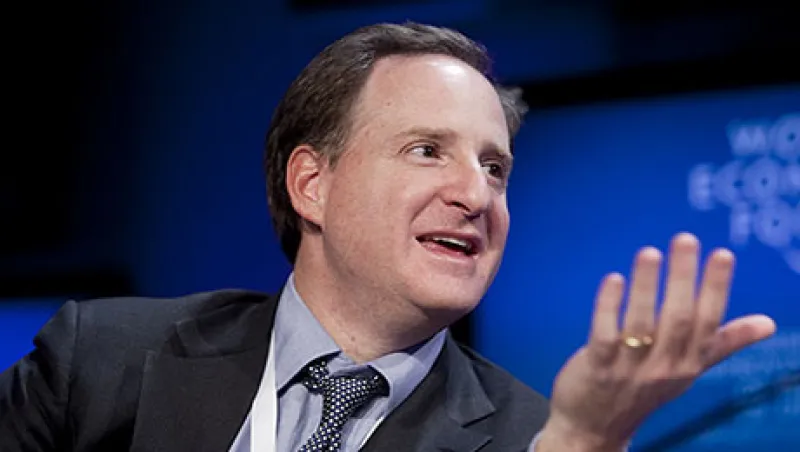It is no secret that multistrategy hedge funds had a rough time last year, with many of the best-known funds posting low- to mid-single-digit gains in the absence of a breakout strategy last year. But one well-known fund had a much tougher time.
Eric Mindich’s Eton Park Capital Management posted a 9.4 percent loss in its main hedge fund, the Eton Park Fund. What’s more, assets at the New York firm shrank by $2 billion, from $9 billion to $7 billion, over the past year alone and are down by about 50 percent since mid-2011. The firm declined to comment for this story.
Eton Park’s recent woes are no doubt a humbling experience for Mindich, the one-time hedge fund hotshot whose $3.5 billion launch in 2004 was hailed as a major fund-raising accomplishment — and widely considered to be the largest-ever launch at the time. Mindich was at one time the youngest-ever Goldman partner. He worked on the bank’s famed risk arbitrage desk, headed by former Treasury secretary Robert Rubin, which also spawned such hedge fund luminaries as Daniel Och and Richard Perry.
Last year’s performance woes followed a string of positive years for Eton Park’s flagship fund. In the four years from 2012 through 2015, it posted gains of 12.2 percent, 22.4 percent, 6.5 percent and 7.5 percent.
That streak may explain why the asset decline over the past year is not due to redemptions; the firm is said to have enjoyed net inflows throughout the year, although it is not yet clear whether the firm received redemption notices at year-end. Rather, about $900 million of asset erosion comes from performance losses, while the rest — about $1.1 billion — is said to result from two closed-end credit funds launched four years ago that had reached the end of their intended lifespan last year. Investors in those funds enjoyed 11 to 13 percent annualized gains, according to a person with knowledge of the funds’ performance.
The credit funds invested in structured credits, especially collateralized debt obligations backed by trust-preferred securities, or TruPS CDOs. Trust-preferred securities are a kind of hybrid security generally sold by banks. TruPS CDOs are securities composed of many trust-preferred securities pooled together.
It is not clear what contributed to last year’s big loss in the multistrategy fund. In general, Eton Park’s main hedge funds focus on five strategies: equity long/short, event-oriented investments, credit/distressed debt, derivatives and market strategies, and portfolio protection.
At the end of the third quarter, Eton Park had $3.2 billion invested in individual U.S. stocks alone. Its largest position was Microsoft Corp. The software and cloud specialist was up 12 percent last year.
In the second and third quarters, Eton Park also held a huge position in call options on SPDR Gold Trust, an exchange-traded fund that tracks the price of gold, and a smaller stake in the first quarter. The underlying stock rose 8 percent for the year but fell more than 8 percent from the end of March through year-end. In the first half of the year, it also hedged with put options on the same ETF. Eton Park also hedged with put options on the PowerShares QQQ ETF, which tracks the direction of the Nasdaq-100 index.







